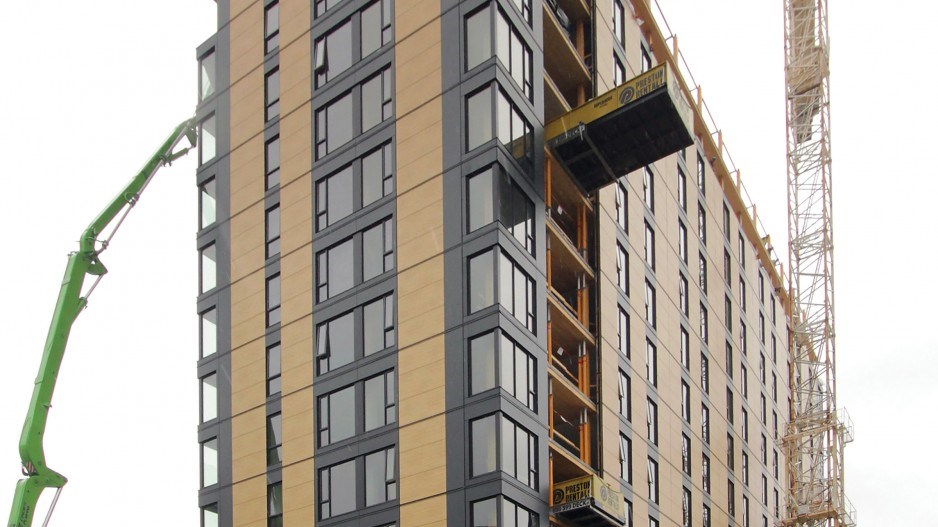Have we been overthinking urban development? Could wood skyscrapers make tower construction shorter, quieter and less intrusive?
Proponents of the technology think so.
“It’s really a shift. People have realized that we’ve got a renewable building material here. Why don’t we use it?” said Bill Downing, president of Structurlam Products, a company that makes parts for mass timber construction. “Rather than bringing in steel from China, for example, maybe we should use the material in our own backyard.”
The University of British Columbia is building the word’s tallest timber tower, which is going up significantly faster than expected. Construction was predicted to take 20 months. But nine months after building started, Brock Commons is already 17 storeys and the final 18th floor is being built this week. Faster construction times are primarily a result of the prefabricated, mass timber pieces that are used to construct timber buildings. Large cross-laminated timber panels (CLT) and columns are made off-site and then delivered in the order in which they’re needed.
“It’s like a big Lego package that arrives on site,” said Downing. “It arrives with the right pieces to be installed at the right time. It’s all prefabricated. You install it, bolt it together and it’s done.”
But the technology is not without controversy. There have been heavy lobbying efforts for and against mass timber. The lumber industry is pushing the environmental benefits and cost savings of highrise timber towers and playing down fears of rot, mildew and fire; the cement and steel industries are trying to prevent mass timber from finding broader application to mid- and highrise buildings by focusing on the strength and durability of their industries’ materials.
Charles Kelly, president of the BC Ready-Mixed Concrete Association, said the CLT products used for mass timber construction were a positive development for construction but added that it’s more suitable for individual housing than mid- and highrise buildings.
According to Downing, one of the largest obstacles to public acceptance of large timber towers is the fear of fire. When people think of wood buildings they think of frame houses that use standard dimensional lumber instead of mass timber elements like CLT panels.
“If you try and start a fire you get small pieces of wood, like kindling. You can’t start a fire by throwing a log on the fire,” said Downing. “Wood burns from the outside, and it chars. Wood keeps its structural integrity for a long time, certainly long enough for people to get out of the building.”
But Kelly does not necessarily see that as a benefit. While wood charring instead of catching fire will likely save lives, the same can’t be said for the structural integrity of the building.
“What happens at the end of the day, any fire damage that may be there – good luck trying to repair that building,” Kelly said. “Basically that building is a write-off. We’re really talking about saving human lives, not saving the buildings.”
Kelly said there are also concerns about insuring timber buildings and about mildew caused by wood exposed to Vancouver rain during construction.
However, both Downing and Kelly agree that hybrid buildings are the best solution to modern construction problems. Both stressed the importance of using the right material for the right job.
“I’m not talking about a future where it’s an all or nothing thing, where all of a sudden we’re building solid timber buildings everywhere,” Downing said. “Brock Commons is a hybrid structure. So it’s got concrete on the first two floors and the stairs and elevator shaft. The cladding on the outside of the building is steel and the rest is wood.”




